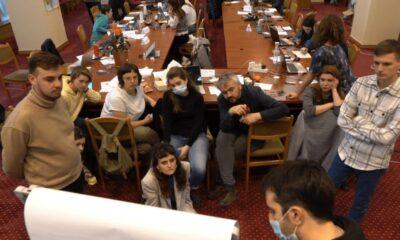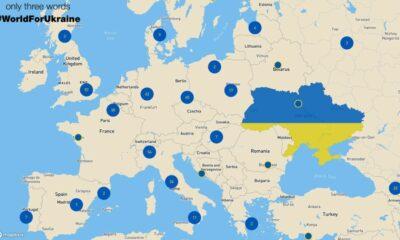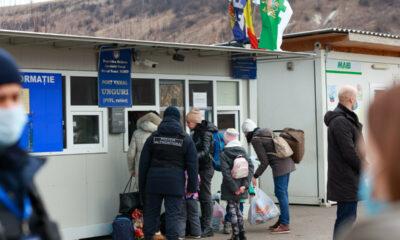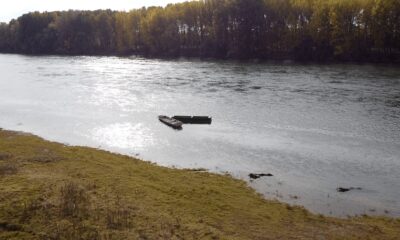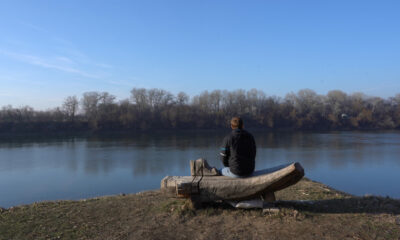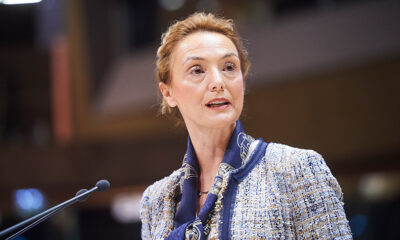Economy
Should Azerbaijan say “no” to the Nabucco pipeline project?
Reading Time: 4 minutesVugar Bayramov: ‘ It doesn’t seem realistic to find an alternative to the Nabucco project neither in an economic nor political sense.’
Vugar Bayramov: ‘ It doesn’t seem realistic to find an alternative to the Nabucco project neither in an economic nor political sense.’
The Nabucco gas pipeline agreement will be signed on June 6th. From the report of the Turkish Energy and Natural Resources Minister Taner Yildirim, it is obvious that Azerbaijan will not participate. The minister anounced that, the companies OMV (Austria), ‘BOTAŞ (Turkey), “Bulgargaz” (Bulgaria), “Transgaz”( Romania), “Mol Natural Gas” ( Hungary) and RWE ( Germany) will sign the agreement. SOCAR’s president Rovnaq Abdullayev announced that Azerbaijan can transport its gas not only via Nabucco but via other more profitable routes.
According to Vugar Bayramov, SOCAR’s search for alternative routes should not be interpreted as Azerbaian’s political position: ‘First of all, SOCAR doesn’t govern Azerbaijan’s energy system, it is just an executive institution even though it holds energy export. Besides participation of the Azerbaijan president in the ‘Nabucco’ summits shows the political will of the country in this direction. Most importantly, existing pipelines are not enough to transport Azerbaijan’s increasing gas.’
According to Vugar Bayramov, it is not an coincidence that this statement is anounced before the oil-gas exhibition to be held in Baku, as well as the agreement to be signed on June 6th in Turkey: Azerbaijan wants to receive better economic conditions in the Nabucco project. In this sense, the latest statement can be a message for the European Union and Turkey, saying Azerbaijan can find alternative routes to transport gas, ‘Nabucco’ just offers suitable conditions for the country.
The economist has also said that, an increase in the construction costs of the ‘Nabucco’ pipeline is normal.‘ There is an increase in the construction costs of all the regional projects. It is not connected with the increase of materials or services. Increase in the costs is directly connected with the division of evaluation into stages. In the first stage the initial and approximate prices are set, and later the detailed prices are set. For instance, the initial costs of the South Stream project supported by Russia, constituted $12 billion, however now the figure is $26 billion, or the costs of the AGRI project was predicted as 1,5 billion Euro, now it constitutes more than 4 billion euro.’
Vugar Bayramov informed that, existing pipelines don’t fit to transport Azerbaijan’s increasing gas to the world market. Azerbaijan exports 2 billion m3 gas to Russia, and the maximum power of this pipe is 6 billion m3. Azerbaijan exports 1 billion gas m3 to Iran and is not going to increase it. It has technical and political grounds. Baku-Tbilisi-Arzurum pipeline has a capacity of transporting 8,8 billion m3., and it it possible that in the following years, the amount will reach by 20 billion m3. in the best case ,which means Azerbaijan needs a new pipeline. ‘Nabucco’ is not just important in political but also in economic sense.
“The economist mentioned that gas revenues of the country will increase rapidly beginning from 2015 and explains it with the launch of ‘Şahdəniz-2’ platform in the end of 2014. ‘ If we consider, Azerbaijan has produced 29 billion m3 gas in 2010, it is forecasted that in 2011 it will be more than 30 billion m3. Launching of “Şahdəniz- 2” platform may result in increase of Azerbaijan’s gas by 46 billion m3. In this case Azerbaijan will increase its gas export by 30 billion m3. With the current prices it means annual income from gas exports will reach $9 billion. If we consider that by the utilization of the other wells, it is forecasted that gas export will increase by 60 billion m3 by the end of the second decade, it means annual income from the gas export may constitute $18 billion for that period. It indicates that in the formation of the state revenues gas revenues will prevail.’
Vugar Bayramov mentions that, it is possible to divide Azerbaijan’s economy into two stages in terms of state revenues: ‘In the first stage,2011-2015 oil revenues will be prevail in the formation of the state revenues. In the second stage , 2015-2020 ,as a result of the rapid increase in the gas exports, gas revenues will be dominant in the state budget. When we characterize these stages in terms of the amount of the state revenues, in 2011-2015 though the growth rate will not change in the GDP, there will be decrease in the growth rate.The State Statistical Committee has forecasted 3 percent growth in GDP in 2011 which was 4,8 percent in 2010. In the independent researches of the international institutions and the Center for Economic and Social Development (CESD), it is forecasted that, in 2011-2012 the growth rate will not change, however increase rate will decrease in comparison with the previous years. The State Statistical Committe has also approves the same conclusion. The same tendency will continue in 2013-2014. However, increase in export income will cause GDP increase rapidly. If we draw Azerbaijan’s development image in the next 20 years, we will see gas revenues prevail oil revenues.’ The economist has also added, as the gas revenues will prevail beginning from 2015, it is possible to get better conditions in the ‘Nabucco’ project.
According to Vugar Bayramov, the difference of the formation of the state revenues on the account of gas revenues rather than oil revenues is explained with the stability of the prices of the first. ‘In recent five years no decrease has been observed in the gas prices. Instead there has been increase. Whereas the oil price changes each day and it creates problems in the predicting the state revenues. Stabilization and increase of the gas prices will help the country to receive stable predicted revenues. ‘The economist has stated that ‘Nabucco’ doesn’t not hold just economic but also political importance. ‘The project is in the political agenda of the West. This project is important for Azerbaijan’s European Integration. The decision of withdrawing from Nabucco has also political responsibility. In this sense finding alternatives for Nabucco doesn’t seem real either in economic or political sense.
Economy
Moldova will receive a disbursement of 36 million euros as part of the the Economic Recovery Plan
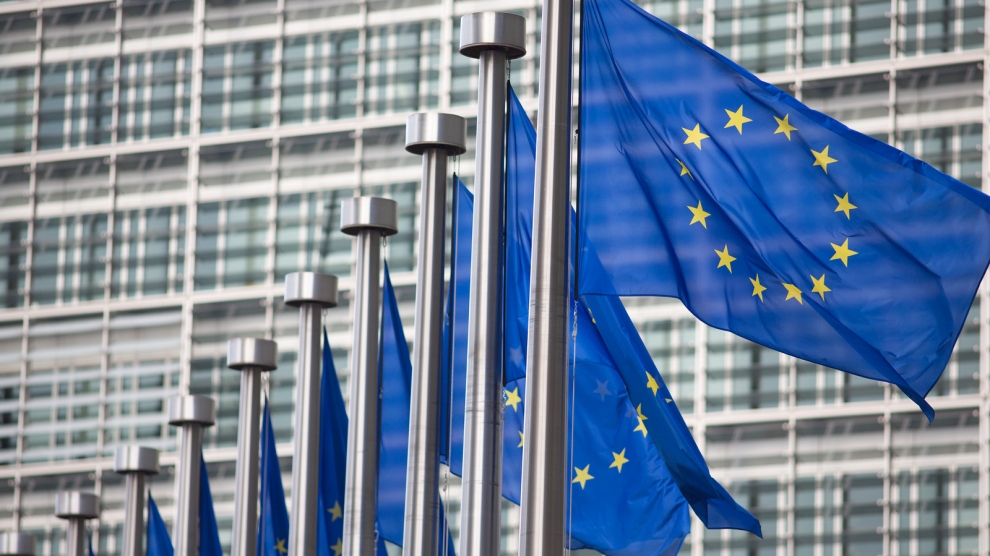
This week, the European Commission approved the disbursement of 36 million euros in grant money for the Republic of Moldova. The announcement was made by Deputy Director-General for Neighbourhood Policy and Enlargement Negotiations at the European Commission, Katarina Mathernova, who paid an official visit to the Republic of Moldova between September 13-15, together with Managing Director for Russia, Eastern Partnership, Central Asia, Regional cooperation and OSCE, at the European External Action Service, Michael Siebert.
The EU officials had meetings with President Maia Sandu, Minister of Foreign Affairs and European Integration, Nicu Popescu, Speaker of Parliament, Igor Grosu, Prime Minister of the country, Natalia Gavrilita, as well as key representatives of Government, international financial institutions and the civil society, according to a press release issued by the Delegation of the European Union to the Republic of Moldova.
Beside such topics as the EU-Moldova relations and prospects, the priorities of the reform agenda of the new Moldovan Government, preparations for the Eastern Partnership Summit at the end of the year and the Transnistrian conflict settlement, the officials also discussed the EU assistance in support of reforms and the Economic Recovery Plan for Moldova, which was announced in June with a total EU support of 600 million euros over the next 3 years.
“The first measures under the Economic Recovery Plan will shortly materialize, with the expected disbursement of 36 million euros in grant money under budget support programmes to support the authorities’ efforts to fight against the consequences of the pandemic. Moldova can count on EU’s assistance on its path to reforms and to recovery, bringing tangible results to citizens,” Katarina Mathernova stated.
The plan is based on assistance provided by the European Union through various bilateral and regional instruments, aiming to mobilize the funds in the form of grants, loans, guarantees and macro-financial assistance.
“The Economic Recovery Plan for the Republic of Moldova involves much more, not just this financial support provided immediately. It must help digital transformation, strengthen infrastructure, energy efficiency, education and support small and medium-sized enterprises,” the EU official also said.
As Prime Minister Natalia Gavrilita informed, “The Economic Recovery Plan and the 5 flagship initiatives for Moldova in the Eastern Partnership will directly contribute to the reform and consolidation of institutions, stimulate long-term socio-economic development, bring direct benefits to citizens, and unleash new economic opportunities through promoting the green agenda and digitization. Small and medium-sized enterprises (SMEs) have been hit hard by the crisis. Promoting and diversifying access to finance and reducing collateral requirements will be essential in supporting economic operators. We are grateful to the EU partners who will launch two programs to support 50 000 independent Moldovan SMEs to adapt to the new conditions.”
President of the Republic of Moldova, Maia Sandu, welcomed the decision of the European Union to disburse about 745 million lei in grant money, as the official page of the President’s Office announced. “EU support comes after a long period of freezing of European assistance, caused by former governments. We managed to relaunch the political dialogue with the European Union and resume financial assistance. The Republic of Moldova is gradually regaining the trust of its strategic partners. This European support is also a signal of encouragement for the new Government team in its commitment to clean up the institutions, fight corruption and launch development programs in the country,” said Maia Sandu.
Photo: unknown
Economy
Romania and Moldova signed a partnership memorandum pledging to cooperate in promoting their wines
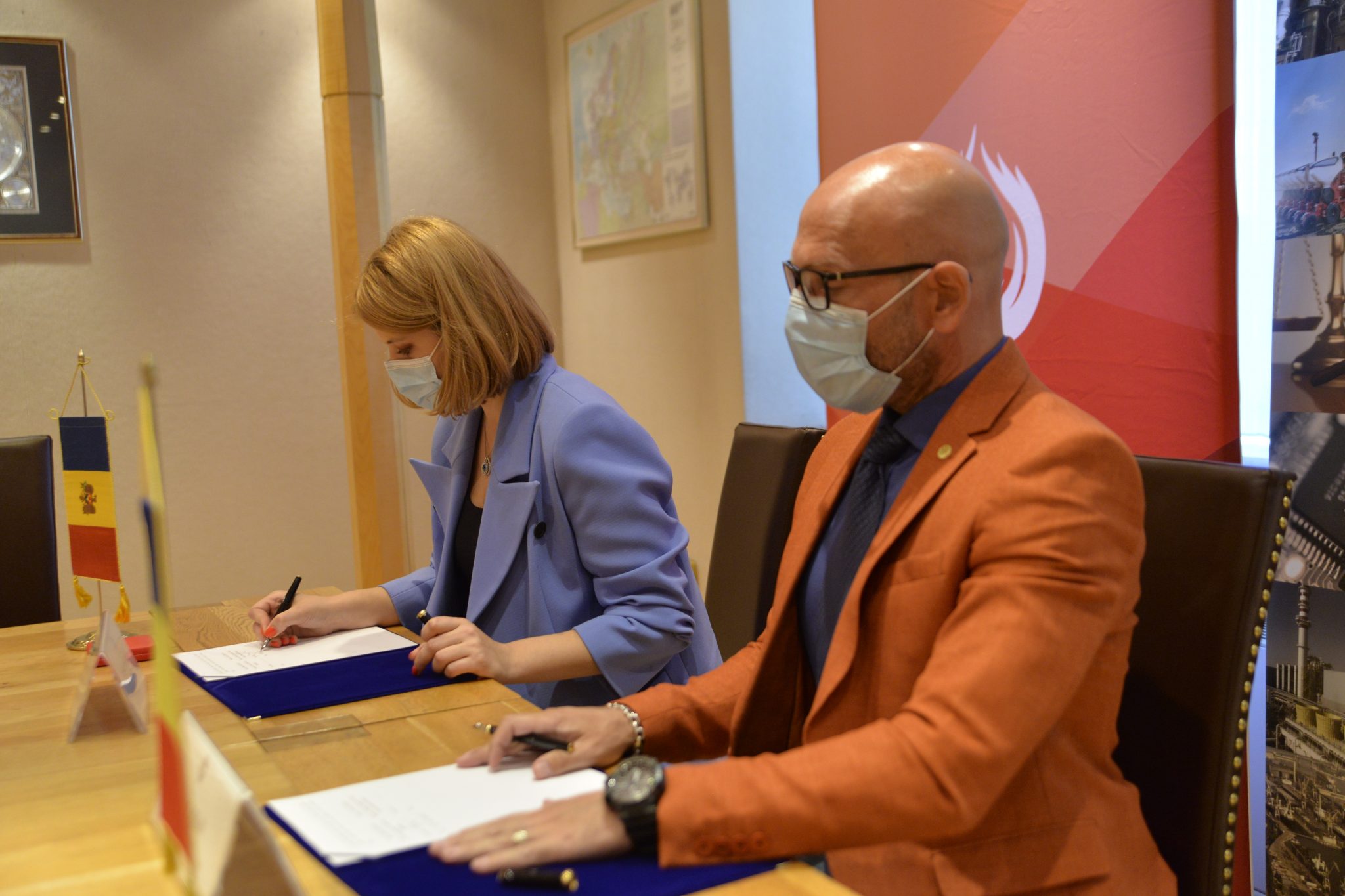
The Chamber of Commerce and Industry of Romania (CCIR) and the National Office for Vine and Wine (NOVW) of the Republic of Moldova signed, last week, a memorandum of cooperation on organizing joint promotional activities in the markets of common interest, as the CCIR announced.
China, Japan or the USA are just some of the markets targeted by the Romanian and Moldovan institutions. The memorandum also involves advertising activities for wines from common indigenous varieties, promoting the oeno-tourist region, developing a tourist route in the two states, exchange of experience, study visits, and mutual support in identifying new export opportunities. “We are very confident that this collaboration between our organizations will lead to sustainable economic growth and a higher degree of well-being among Moldovans and Romanians,” claimed Deputy Secretary-General of CCIR, Bogdan Visan.
On the other hand, Director of the NOVW, Cristina Frolov, declared that no open competition with Romania is aimed at the governmental level of the Republic of Moldova. “This request for collaboration is a consequence of the partnership principle. Romania imports 10-12% of the wine it consumes, and we want to take more from this import quota. Every year, the Romanian market grows by approximately 2.8%, as it happened in 2020, and we are interested in taking a maximum share of this percentage of imported wines without entering into direct competition with the Romanian producer,” the Moldovan official said. She also mentioned that Moldova aims at increasing the market share of wine production by at least 50% compared to 2020, and the number of producers present on the Romanian market – by at least 40%.
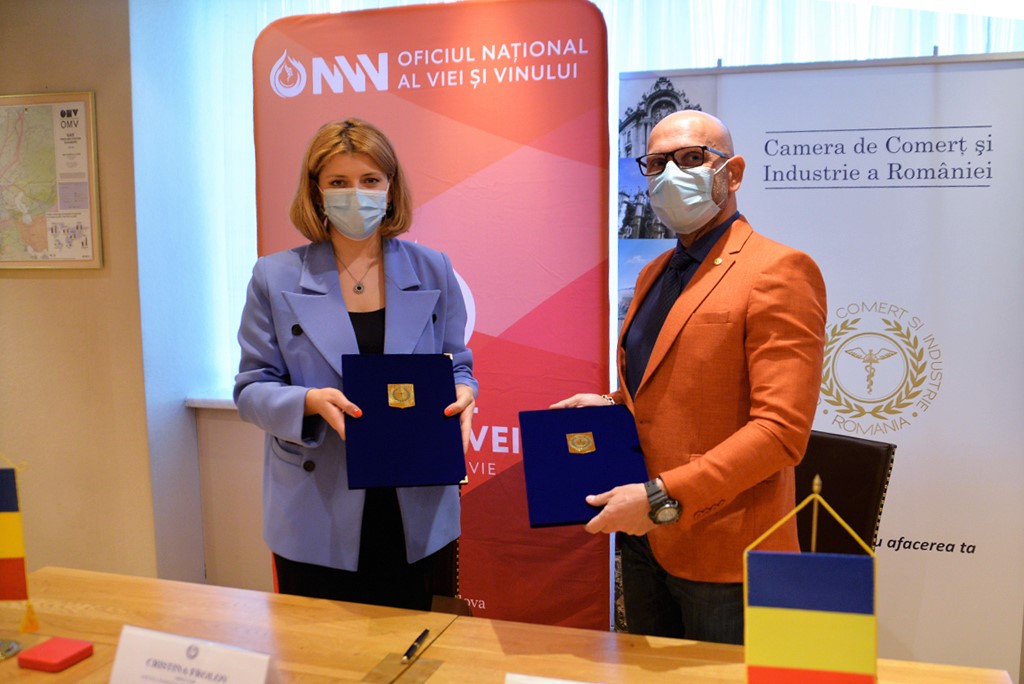
Source: ccir.ro
**
According to the data of the Romanian National Trade Register Office, the total value of Romania-Moldova trade was 1.7 billion euros at the end of last year and over 805 million euros at the end of May 2021. In July 2021, there were 6 522 companies from the Republic of Moldova in Romania, with a total capital value of 45.9 million euros.
The data of Moldova’s National Office of Vine and Wine showed that, in the first 7 months of 2021, the total quantity of bottled wine was about 27 million litres (registering an increase of 10% as compared to the same period last year), with a value of more than one billion lei, which is 32% more than the same period last year. Moldovan wines were awarded 956 medals at 32 international competitions in 2020.
Photo: ccir.ro
Economy
Moldova’s hope to be a top walnut exporter and its main difficulties
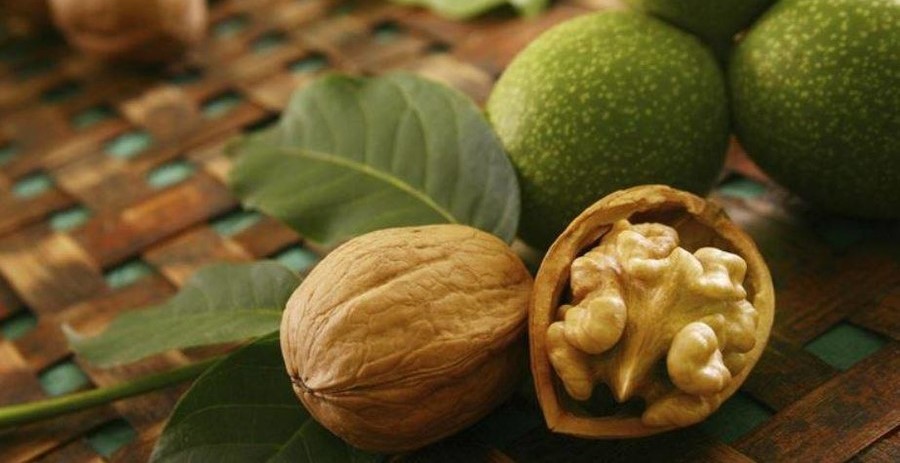
The Republic of Moldova has perfect weather conditions for growing walnut trees, that creating a great potential of walnut production and trade, especially on international markets, where the demand is way higher than the product’s supply. National and international experts believe that the country’s walnut production industry is on the verge of important transformations, which could lead to increased yields, quality and competitiveness worldwide.
According to authorities, Moldova exports 34-35 thousand tons of walnuts in shell, which is about 7% of the total export of fruit and 5% of the total export of horticultural products. The export value is assessed as being $120 million, that being 57-60% of the total fruit export value and about 50% of horticultural export value. Most of walnut crops are exported to the EU countries, such as France, Germany, the Netherlands, Romania and Austria. The country’s exports were among the world’s top 10 when it comes to the highest dollar value of the product during 2020.
Viorel Gherciu, Minister of Agriculture and Food Industry, pointed out that the production in the domestic walnut industry has increased by 55% in the last five years, which ranks Moldova among the main producers in the world.
“The biggest opportunity for this industry is that we are in the geographical proximity of the largest walnut import area in the world, which is the European Union, with almost 40% of total imports in the world. We are on the EU border, with privileged relations, with an Association Agreement. We already enjoy a good relationship in working with European importers, they trust our processors. A very close collaboration has been created and this is, in fact, the guarantee for those who invest in the area,” claimed the president of the Walnut Producers Association, Oleg Tirsina.
The data provided by the National Bureau of Statistics show that there are 34.7 thousand hectares of walnut plantations in the country. 20.90 hectares are represented by orchards. 75% of planted orchards are formed of old varieties trees. 30-35% of the exported production comes from orchards, the rest comes from individual farmers and plantations along the roads. This means that the quality of walnut production is not at its maximum potential. Developing commercial plantations through orchards modernization and extension of walnut varieties would provide double yield and better quality, experts say.
Governmental support in the form of subsidizing solutions, foreign investments and credit options are indispensable for the industry development. One of the financing options is the credit line of the European Investment Bank Project. Since 2016, 15 producers and processors of nuts, almonds and hazelnuts have benefited from these loans with the total amount of investments worth 8.7 million euros. A further extension of the project would provide another 60 million euros for the modernization of the horticultural sector in general and for harvesting organic walnuts in particular.
Photo: heymoldova.com


